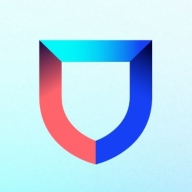

ReversingLabs and Lacework FortiCNAPP are two solutions in the cybersecurity space. Lacework FortiCNAPP holds the upper hand due to its advanced features that provide comprehensive security, particularly in cloud environments.
Features: ReversingLabs offers robust malware analysis, detailed threat intelligence insights, and extensive file type reporting. Lacework FortiCNAPP stands out with expansive cloud security capabilities, effective anomaly detection, and comprehensive compliance reporting, which make it particularly advantageous for companies with extensive cloud infrastructure needs.
Room for Improvement: ReversingLabs could benefit from enhancing its cloud-native integration and expanding compliance feature offerings. Improvements in user interface can increase its usability. Better seamless integration with more platforms would be an asset. Lacework FortiCNAPP may focus on optimizing deployment processes for non-cloud environments and improving cost-efficiency. Expanding its preset alerting systems could enhance user experience, reducing configuration complexity.
Ease of Deployment and Customer Service: ReversingLabs provides a straightforward deployment experience complemented by dependable customer support that addresses issues swiftly. Lacework FortiCNAPP excels in deployment with seamless cloud integration, further supported by proactive technical assistance. Its integration with cloud platforms facilitates an efficient deployment process.
Pricing and ROI: ReversingLabs delivers a cost-effective security solution with a positive ROI through its preventive threat measures. It is an appealing choice for organizations focused on budget optimization. While Lacework FortiCNAPP requires a higher initial investment, the benefits are seen in its comprehensive security features and potential long-term savings, making it a worthwhile consideration for businesses prioritizing robust cloud security.
| Product | Market Share (%) |
|---|---|
| Lacework FortiCNAPP | 1.9% |
| ReversingLabs | 0.4% |
| Other | 97.7% |


| Company Size | Count |
|---|---|
| Small Business | 4 |
| Midsize Enterprise | 4 |
| Large Enterprise | 3 |
Lacework FortiCNAPP provides robust cloud security, combining vulnerability management and multi-cloud insight with user-friendly controls, machine learning detection, and compliance support.
Lacework FortiCNAPP specializes in cloud security by merging machine learning anomaly detection with agent-based vulnerability management to offer detailed alerts and compliance reports. Its comprehensive approach allows continuous monitoring across AWS and Kubernetes, providing insights from an attacker's perspective. The platform offers automation and seamless Slack integration, facilitating collaborative and efficient cloud security management. Users value its ability to handle multi-cloud environments and scan IAC scripts, configurations, and compute nodes across AWS and GCP.
What are the key features?Organizations across sectors leverage Lacework FortiCNAPP for cloud security, focusing on compliance, security posture, and vulnerability management. It is widely used for monitoring AWS and Kubernetes environments, scanning IAC scripts, configurations, and securing compute nodes. It supports multi-cloud security posture management and log ingestion, enabling companies to maintain strong cloud infrastructures without dedicated security layers.
ReversingLabs is the trusted authority in software and file security. We provide the modern cybersecurity platform to verify and deliver safe binaries. Trusted by the Fortune 500 and leading cybersecurity vendors, the ReversingLabs Titanium Platform® powers the software supply chain and file security insights, tracking over 35 billion files daily with the ability to deconstruct full software binaries in seconds to minutes. Only ReversingLabs provides that final exam to determine whether a single file or full software binary presents a risk to your organization and your customers.
RL - Trust Delivered.
We monitor all Container Security reviews to prevent fraudulent reviews and keep review quality high. We do not post reviews by company employees or direct competitors. We validate each review for authenticity via cross-reference with LinkedIn, and personal follow-up with the reviewer when necessary.